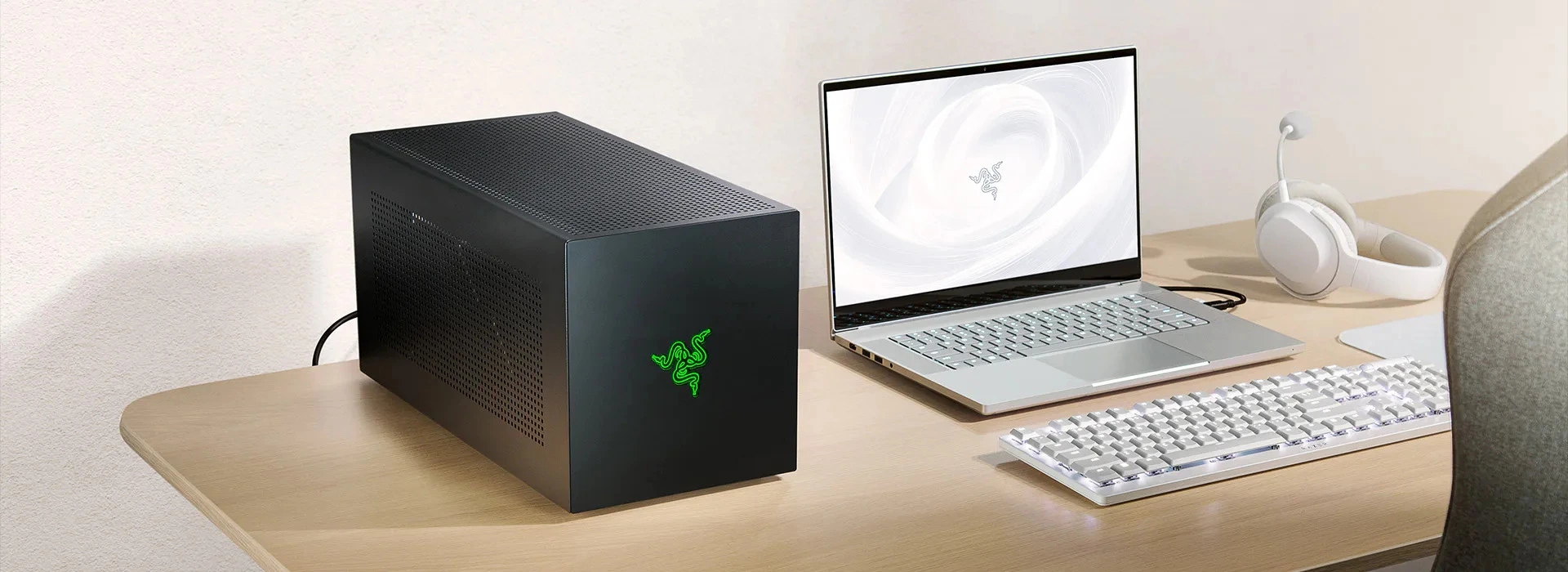Razer Core X V2: Is It the Ultimate Solution for Thin and Light Laptops?
In the ever-evolving world of technology, transforming thin and light laptops into AAA gaming rigs or creative powerhouses has long been a dream for many users. Razer has just unveiled the Core X V2 — one of the first external GPUs (eGPUs) to support Thunderbolt 5, promising desktop-level graphics performance for mobile devices. But is it truly the perfect solution?
Impressive Specifications
The Core X V2 marks Razer’s return to the eGPU space after a six-year hiatus. It supports large PCIe Gen 4 graphics cards, including upcoming four-slot monsters like the RTX 50-series.
-
Connection technology: Thunderbolt 5 with up to 120Gbps (one-way) and 80Gbps (bidirectional) bandwidth
-
Compatibility: Works with Windows laptops and handhelds using Thunderbolt 4 or 5
-
Cooling system: 120mm fan ensures stable temperatures
-
Power delivery: Up to 140W via USB PD for device charging
Key Differences From the Previous Generation
While the previous Core X Chroma earned praise for its built-in 650W PSU, USB ports, and RGB lighting, the V2 takes a surprisingly minimalist approach.
Notable Changes:
-
No built-in PSU — users must provide their own ATX power supply
-
USB, Ethernet, and LED lighting completely removed
-
Performance-focused design with a price tag of $350
Who Should Use the Core X V2?
This solution is best suited for:
-
Mobile gamers who want to upgrade their thin laptops into gaming beasts
-
Creative professionals needing powerful graphics for rendering and video editing
-
Users who already own Thunderbolt 5 devices and are willing to invest in accessories
Pros and Cons
Pros:
-
Easy plug-and-play setup
-
Supports the most powerful GPUs available
-
Future-proof with Thunderbolt 5 support
Cons:
-
Requires separate PSU purchase
-
Needs a $390 Thunderbolt 5 dock for extra ports
-
No macOS support due to Apple Silicon’s lack of eGPU compatibility
Future Outlook
With Thunderbolt 5 on the rise, eGPUs could see a resurgence. However, devices supporting the new standard are still limited. Razer plans to launch the Core X V2 on its official website, with broader distribution expected soon.
Experts are waiting for real-world testing to see whether the increased bandwidth translates into noticeable improvements in mobile gaming — or if it’s just another flashy feature.
Conclusion
The Razer Core X V2 offers impressive desktop-class performance for mobile users, especially as Thunderbolt 5 gains traction. However, Razer’s modular approach may lead to higher total investment costs. It’s an ideal solution for professionals ready to invest — but perhaps not the most practical choice for the average consumer.



